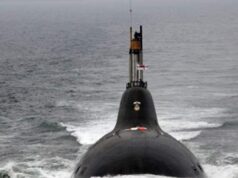China not involved in the India-Pakistan conflict ??

The recent escalation between India and Pakistan has once again raised concerns about China’s role.
A troubling trend however emerged at the beginning of the conflict itself within Chinese Social media, Pakistani media and some Western outlets: the growing campaign to highlight the super performance of Chinese military hardware and the resulting losses suffered by the Indian Forces. However once the dust settled these unsubstantiated claims got debunked by International analysts with the hard proof available on ground. The world realized the severity of precision damage inflicted on Pakistani terrorist groups infrastructure and also on all 13 major PAF bases. Chinese supplied airdefence systems and Chinese missiles proved to be most ineffective in defending the Paki assets.
Then few Indian media groups became hyper too. A New Delhi-based think tank, the Centre for Joint Warfare Studies, alleged that China had provided air defense and satellite support to Pakistan even during the skirmishes. This claim was quickly amplified by several Indian media outlets and further emphasized by some Western commentators. As a supporter of Pakistan the Terroristan, China itself got accused of “shielding terrorism” and being part of the anti-India axis.
Though the Indian government itself officially debunked such rumours. A particularly viral piece claimed that External Affairs Minister S Jaishankar acknowledged Chinese satellite support for Pakistan. The Indian government dismissed this as fake news, urging the public to be cautious and not fall for fabricated news. This public statement directly contradicted the media hysteria.
Meanwhile, China tried to maintain a position of neutrality regarding the India-Pakistan conflict. Beijing has repeatedly called on both sides to avoid escalation and resolve disputes through dialogue. China engaged diplomatically with both New Delhi and Islamabad to reduce friction and avoid a broader regional crisis.
However Indian media houses continue to emphasize that China is a covert participant in the conflict. Though China claims that its position on terrorism is unequivocal: it strongly opposes all forms of terrorism and has consistently worked with the international community to combat it.
Pakistan’s use of Chinese weapons certainly implies Chinese support for Pakistan but it does not imply active involvement in the conflict itself aka European Union in Ukraine.
India imports military equipment from a diverse range of countries, including the United States, Russia, and France. Would anyone claim that these nations are actively aiding India in its military conflict ? Of course not. Military sales do not equate to military involvement.
More broadly, these fake news and inaccurate assumptions only reflect natural anxieties regarding China-Pakistan cooperation. The longstanding strategic partnership between China and Pakistan has to be viewed with suspicion particularly in light of China’s Belt and Road Initiative and the China-Pakistan Economic Corridor (CPEC) passing through the Indian territory that is Pakistan Occupied Kashmir. China must realize this without fail and make immediate amends.
This is not the first time that media sensationalism has interfered with rational discourse on India-China – Pakistan relations. Historically, Pakistan has been covering Kashmir since 1947, forgetting the fact that it is an integral non negotiable part of India. Pakistan has been obstinate and this has led to multiple wars and recurring skirmishes. China outwardly at least has maintained a neutral stance for its own security and economic priorities.
China’s efforts at fostering dialogue are evident in its support for forums like the Shanghai Cooperation Organization, which includes both India and Pakistan. By promoting dialogue within multilateral platforms, China has attempted to create frameworks for peaceful dispute resolution. Furthermore, in international forums such as the United Nations, Beijing has consistently advocated for peaceful negotiation over confrontation. Though it acts totally opposite when it comes to threatening Taiwan, Phillippines, Vietnam etc. Also when it comes to forcible subjugation of Tibet.
India of today has made it completely clear to Pakistan and the rest of the World that the only unresolved issue between India and Kashmir is return of Pakistan Occupied Kashmir along with Shaksgam Valley. As long as this remains unaddressed, temporary ceasefires will be little more than pauses between cycles of violence. It is in this context that Indian media narratives have indeed become especially strong. The clock is ticking for Pakistan.
Indian and Pakistani people are bound by geography, history, and culture. They cannot wish each other away. Likewise, China, as a neighbour to India( it has no borders with Pakistan ), has an inherent interest in ensuring regional peace and prosperity. China too must strive to resolve the Indo Tibetan and China- Tibet border at the earlist.
In the long term, media-driven narratives whether Chinese or Indian, may not be conducive to the image of good Indo China relationship and may be detrimental to their strategic interests.
Therefore, it is essential that media and think tanks like Global Times etc reflect critically on their role in shaping national discourse. Sensationalism like renaming places in Indian areas by China might garner headlines, but it does not serve the cause of truth, peace, or national interest. The responsible path forward lies in respectful diplomacy, and a willingness to engage with complex issues without resorting to scapegoating.
India remains committed to fostering a peaceful regional environment and calls on all stakeholders-especially media and policy influencers-to contribute constructively to this goal. Mutual respect, restraint, and dialogue must guide the next chapter of India- China relations. To achieve lasting peace, the focus must return to eradication of terror ecosystem from Pakistan. Also not only China but even rest of the World must stop equating Pakistan with India in any sphere whatsoever.




